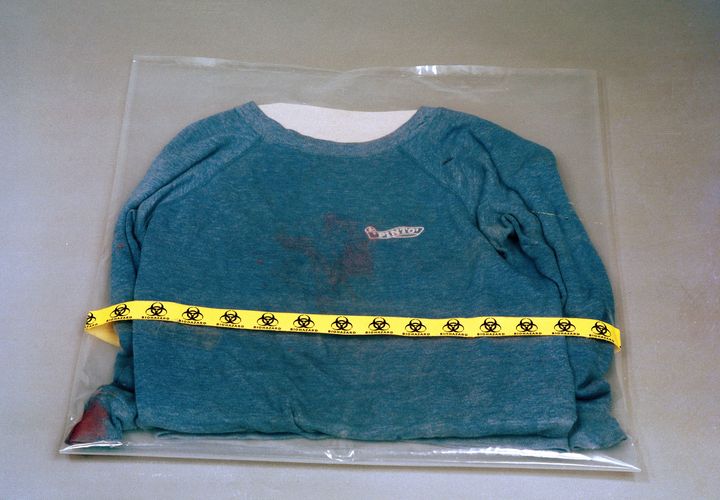
A cold case specialist has told jurors of a “very strong” link between fibres found on the bodies of two schoolgirls and a discarded blue Pinto sweater said to have been worn by their alleged killer.
Nine-year-olds Karen Hadaway and Nicola Fellows were found sexually assaulted and strangled in a wooded den in Wild Park in Brighton, a day after they went missing while out playing near their homes in October 1986.
Roofer Russell Bishop, then aged 20, was acquitted of their murders in 1987 but was ordered to stand trial again in light of new evidence from advances in DNA testing.
Senior forensic scientist Roy Green, who is based at a laboratory in Abingdon, Oxfordshire, said he was called in to deploy “new techniques and new ways of thinking” in the high profile case known at the time as the Babes in the Wood.
In 2014, he received two boxes from the forensic archive, which included 104 microscope slides of fibres collected by scientists during the original 1986 investigation.

His examination of fibres on a blue Pinto sweatshirt found discarded along Bishop’s route home identified a link with the defendant, his then-girlfriend and the dead girls, jurors heard.
Green said the number of coincidences needed to explain away all the different fibres connected with Bishop’s home environment were “too numerous to be credible”.
The fibres provided “extremely strong support” for a link between the Pinto sweatshirt and items from Bishop’s home while there was “very strong support” for a link between the Pinto and Karen and Nicola’s clothes, he said.
Prosecutor Brian Altman QC asked if the jury was to conclude the defendant was wearing the Pinto top at the time of the killings whether fibres would have been lost by the time it was recovered from behind Moulsecoomb train station.
Green said: “Yes, after four hours, 80% of the fibres will have fallen off.
“Having visited the scene you will have got a sense for the distance from the scene and where the item was found, so in that time there may well have been further fibres that were lost in the process of wearing it, carrying it, or taking it off, so there will have been more fibres on that item than were ultimately found.”

On the theory of secondary transfer between the Pinto sweater with another potential suspect, Green said it would not explain fibres on the girls’ clothes at the scene.
He said there were opportunities for the transfer of fibres during contact with the girls in the weeks before the killings, but they were greatly reduced.
Green said it did not explain his findings on Nicola and Karen’s clothing which were clean on that day.
A taping from Karen’s left forearm taken during her post-mortem examination produced a one in a billion DNA match to Bishop, the Old Bailey has heard.
Bishop, now aged 52, formerly from Brighton, has denied two counts of murder.
